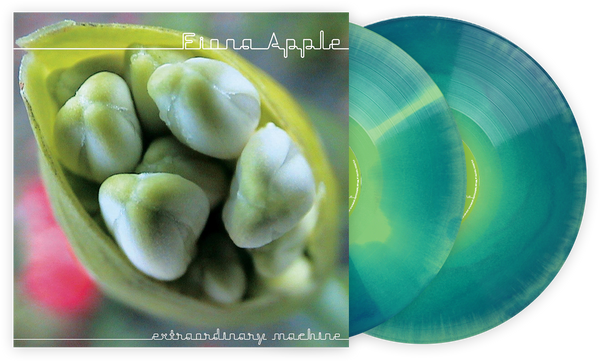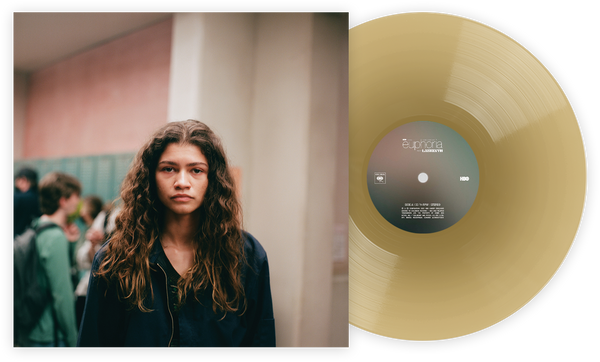Short of buying a replacement copy of your prized records, there really isn’t a quick and easy way to alleviate the pain of having a bent or warped record on your hands, and buying new isn’t always an option. You might have noticed some people put a clamp over their records while they play them, but those don’t work for every turntable and they don’t actually fix a warped record, they just soften the effects by smashing your record down during playback. Although your perception of an “easy way” to fix a warped record might be wholly different than others in the vinyl-collecting community, simply bending it back the other way is not an option. This guide to flattening warped vinyl records will hopefully get you on track or, at the very least, prevent you from irreparably damaging your records.
You probably wouldn’t be reading about how to fix this problem if it wasn’t already an issue, but general prevention is a good place to begin. So before we jump head-first into ways to fix warping issues, let's start with some basics about vinyl care that might prevent you from having to troubleshoot this issue in the first place.
Prevention
Don't let your records get warped
First, don’t put your records on a shelf with too many records leaning on one unfortunate record on the end. On an overflowing shelf that lacks support dividers, the weight of each record adds up quickly, and you don’t want the records on one end to be supporting the weight of your entire collection. That’s why these Ikea shelves are so highly coveted: they’re the perfect balance of shelf space and divider support.
Similarly, don’t stack your records like a deck of cards. If you stack them horizontally, the records on the top will be okay (probably), but on a stack too large (or left too long) you will inevitably add excessive pressure on your records. Because some of your sleeves will have things like drop cards, 7-inch bonus records, album art books, or the protruding zipper from your copy of Sticky Fingers, the unevenness of the packaging will introduce disproportionate weight and pressure to the stack, further exacerbating the warping. Sure, go ahead and tastefully stack them for a picture, but stand them back up posthaste. Simply said, it’s bad for your vinyl if you leave them stacked like pancakes. Don’t do that.
Finally, don’t leave your records in excessive heat. You’ll see below that re-introducing heat will potentially help you to tame a warped record, but don’t leave your records in a hot car or have them delivered to a sun-scorched doorstep in Las Vegas where you might accidentally leave them for a week while on vacation. For short periods of time (like when your vinyl is on the delivery truck) you’re probably fine, but direct heat and sunlight over any extended amount of time is detrimental to the life of your vinyl.
Now that we have addressed the basics of how your records can get warped in the first place, next we’ll go over a few of the generally accepted ways to remedy the problems, if you notice your records are getting as bent out of shape as your drunk aunt at Thanksgiving dinner.
Method 1: Pressure And Time
Think weeks and days, not minutes and hours
This is essentially the leave-it-between-two-large-books-for-a-long-time-and-hope-that-fixes-it way. If you have some large and heavy books to cover the record you’re trying to flatten (like that Dust & Grooves coffee table book you asked your mom to buy you last year), this method will serve you well. Constant pressure should flatten your LP into submission like Ric Flair giving a Figure-4, but it will take a lot of time to really make a difference. Be careful you aren’t doing something more destructive in the process, like adding a ton of weight to a dirty record and grinding a grain of sand into the chorus of “Don’t Stop Believin.” Clean your record first and consider leaving the record in the inner sleeve when putting it between your books — that should help prevent dust building up on any part left uncovered.
Method 2: Pressure And Heat
Vinyl sandwich, toasted, on glass
I’m not even going to link to some of the how-to websites that will teach you ways to fix a warped record by putting it between two large panes of glass and putting it in the oven. If you pay attention to all the warnings in the sidebars, you’d have a clear picture in your mind of how wrong this could go. That said, if you find an article that is brazen enough to give you specifics and guide you through the process with more detail than I’m about to, it might be worth a try, but only as a last-ditch effort. Heed the warnings.
Here are the general steps:
Get two large panes of glass that will fit in your ovenPlace the record between the two panes of glass, making sure the record is [clean](https://www.amazon.com/SPIN-CLEAN-STARTER-RECORD-WASHER-SYSTEM/dp/B002UKSZUU/ref=as_li_ss_tl?ie=UTF8&qid=1466547166&sr=8-6&keywords=vinyl+cleaner&linkCode=ll1&tag=warpedrecords-20&linkId=10a91abd71b7a8e3d06e729f62e65417) firstPreheat the oven to its lowest temperature settingPut your vinyl & glass sandwich in the oven for 30 minutesTurn the heat offLet the record cool down to room temperatureDetermine whether or not that fixed the warping. If it did, great. If not, you will need to try again from the top, with either *slightly* more temperature or for a longer duration
Personally, I just can’t imagine a scenario where this is the best option, and I certainly wouldn’t recommend it. Ovens are for baking cookies and frozen pizzas and, as far as I know, nothing else. Where most simple fixes are usually harmless if they don’t work, putting a vinyl record in a kitchen oven just seems like you’re asking for trouble — not to mention the warnings of toxic fumes and general danger if you embark on this adventure. For a record so valuable that you can’t stand to replace it, it’s probably also too valuable to risk completely melting it. If you are going to attempt to flatten your record this way, I would emphasize low temperature and patience above all else. If the method you find online says it’s “easy” and “only takes 20 minutes,” they are “liars” and “not to be trusted.”
Seriously though, as a final note on this method, focusing too much heat on your records could introduce groove-distortion (microscopically wearing down the grooves so the sound is not as dynamic as it once was). It might give you the appearance of a flatter record, all the while masking the reality that you just went Martha Stewart on your vinyl, baking it like a pecan pie, when you’d have probably just been better off making a decorative bowl out of it.
Method 3: A Machine, Heat And Pressure
Expensive and questionable equipment
If someone has told you that there are machines you can buy that are specifically made to flatten out vinyl records, they were right, but you’ve been set up for disappointment. Generally speaking, they do exist, however they are not only disproportionately overpriced for their value but also nearly impossible to find. With a little online hunting you might be directed to the Furutech - DF-2 LP Flattener (essentially a less effective George Foreman grill for your records), but you’re not going to casually stumble upon one of those this weekend at Target. Essentially, what these machines do is combine Methods 1 and 2 from above in a more controlled fashion, taking much of the work out of the process and no longer requiring you to find two panes of glass that fit in your oven. If you were compelled to seek out one of these contraptions, perhaps because the methods previously outlined failed to fix the problem, you should expect to spend more than $2,500 to own one yourself. For that amount of money, you could buy yourself a new stereo and a potentially a new record collection altogether, and in that case, it might be better to reconsider your priorities at this juncture in life.
Final Thoughts
Whichever way you decide to go, just remember that a slightly warped record that plays is better than one that looks like a salad bowl because you accidentally overheated it in your oven. If you have a warped record, give Method 1 a try before you embark on an unnecessary and possibly dangerous quest. But if you insist on trying the method where you cook it in your oven like a pizza, take the time to try it a few times with some dollar-bin vinyl first. Remember, you might make your vinyl flat, but you could also be damaging the grooves and adding distortion, so consider that before you commit to any one of these methods.






